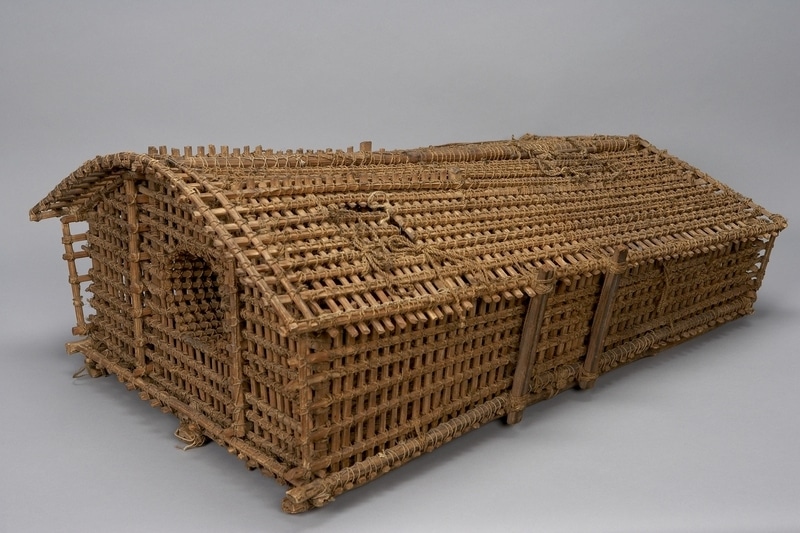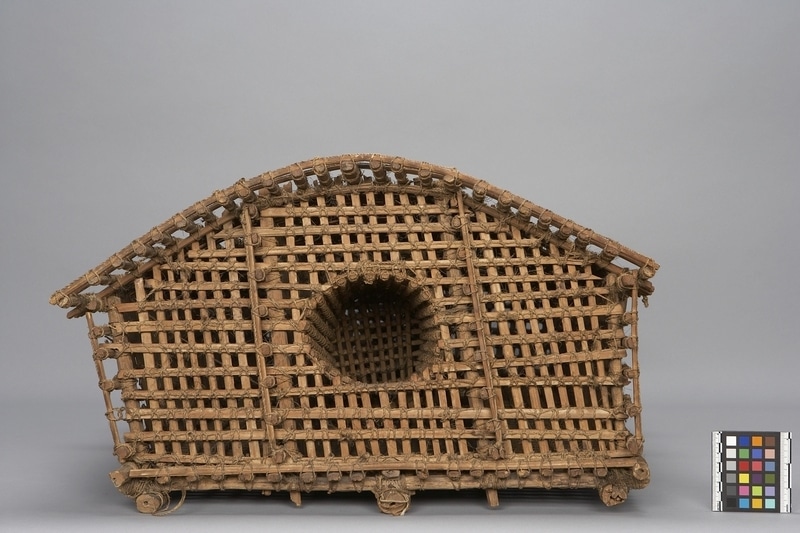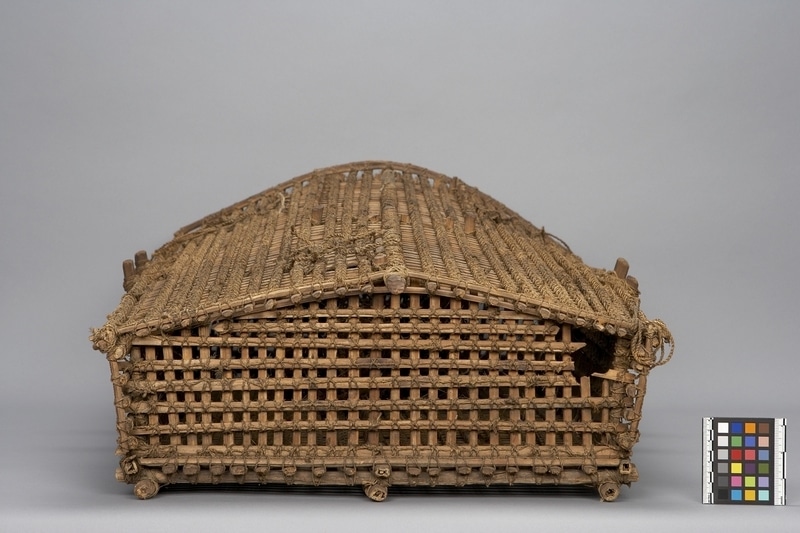Eel Trap Item Number: C828 from the MOA: University of British Columbia



Description
Eel trap with latticework walls composed of strips of wood lashed together with twined plant fibre. The entrance to the trap is a cylindrical hole with a flap that opens to the inside of a rectangular compartment with an opening covered by a plant fibre net. There are two square flaps in the roof of the trap that open to the remaining space inside the trap. The roof above the opening is arched, and the roof at the opposite end of the trap comes to a point at the centre. Two wooden bars are attached vertically to both sides of the trap.
History Of Use
Eel fishing with traps is one of the oldest traditional methods of fishing still practiced in the Pacific. Their use, in the words of the donor, are as follows: “The circular entrance […] in the front of the traps runs about three-quarters of the length of the trap and narrows gradually. Beyond its end, bait is placed. The fish swims in and passes out of the circular tube into the confines of the trap and strangely enough never realizes it can get out the way it came. Instead [it] remains in the area surrounding the tube until the fisherman draws up the trap and lifts the captive out through a little door […] on the top.” These house-shaped traps, unique to Kiribati, take about four days to build.
Specific Techniques
Traditionally made of heavy shrub or ironwood, these materials are sometimes replaced with wire.
Item History
- Made in Gilbert Group, Kiribati before 1902
- Collected during 1902
- Owned by Frank Burnett before 1927
- Received from Frank Burnett (Donor) on July 25, 1927
What
Who
- Culture
- I-Kiribati
- Previous Owner
- Frank Burnett
- Received from
- Frank Burnett (Donor)
Where
- Holding Institution
- MOA: University of British Columbia
- Made in
- Gilbert Group, Kiribati
When
- Creation Date
- before 1902
- Collection Date
- during 1902
- Ownership Date
- before 1927
- Acquisition Date
- on July 25, 1927
Other
- Condition
- fair
- Accession Number
- 2191/1137